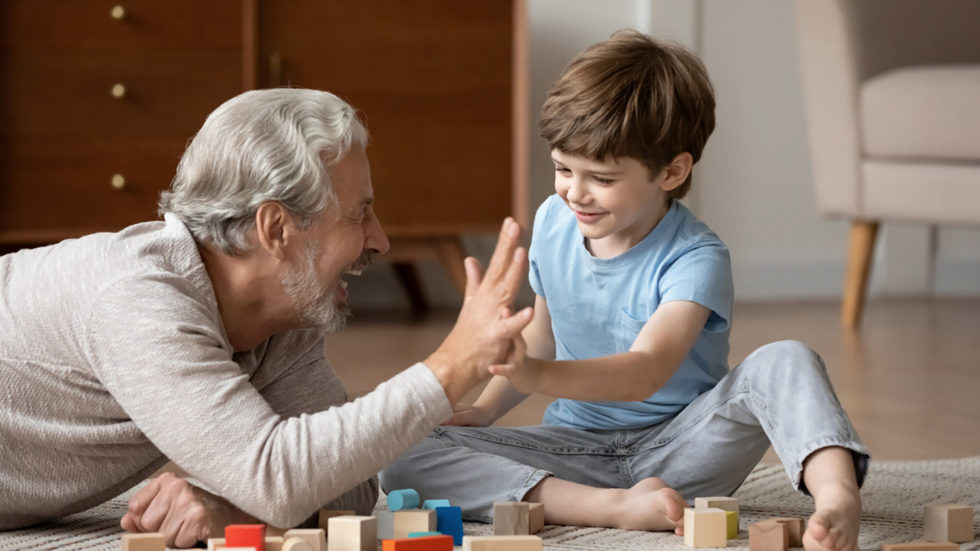Why Virtual Learning Simply isn’t Meeting the Needs of Students with Autism

A young child sitting at a kitchen table, staring blankly at a laptop screen has become one of the defining—and disorienting—images of 2020. Virtual learning during the COVID-19 pandemic has been a trying experience for families everywhere, kids and parents alike. But for children diagnosed with autism spectrum disorder, it may be undermining much of the progress they made prior to the outbreak.
“Autism spectrum disorder is truly a spectrum because there’s such a wide range of abilities and disabilities within it,” says Kristine Quinby, founder and chief executive director of Potential’s Springtime School, a private school in Newtown, Pennsylvania, that’s specially designed to meet the individual needs of school-age children with autism. “Someone can be diagnosed with autism and an intellectual disability. And someone can be diagnosed with autism and be intellectually gifted. The overarching similarity is the difficulty in learning compared to the typical individual.”
Consider the above scene. There are plenty of potential reasons for that blank look. The child may be bored, daydreaming, confused, hungry, or all of the above. Now try to picture a child with autism in the same position. While everyone experiences autism a little differently, paying attention can be a challenge for many children with autism, and not merely in the way most kids have a hard time paying attention. Children with autism can be easily distracted by things that barely even register for people who are not autistic, like the texture of their clothes or the bright light of their laptop’s camera. It can also be difficult for them to focus on anything that’s outside of their narrow range of interest.
In other words, if kids who don’t have autism are struggling to remain tethered to their teachers and classmates in their temporary remote classrooms, those who do have autism may be completely adrift.
The value of being there
In normal circumstances, learning is an enormous challenge for children with autism. It’s important to note, though, that autism is not a learning disability, which, by definition, causes people to struggle with making connections between different pieces of new information and when working to understand and organize that information. Autism and learning disabilities can occur together, but they are distinct from each other.
Even in the absence of a diagnosed learning disability, the main symptoms of autism, including difficulty with social interactions, engaging in repetitive or ritualistic behaviors, and having an intense interest in a few things, can affect learning in negative ways.
For example, if a child has trouble reading non-verbal cues, such as other people’s feelings based on their facial expressions, they may not understand sarcasm or figures of speech, which can make it difficult for them to follow conversations and express themselves appropriately.
“Most people learn by imitating what they see, but kids with autism can’t do that. They need to be taught how,” Quinby says. “Because of that, as they get older, the various means that typical kids use to connect with each other and those around them may not necessarily work for kids with autism.”
And the progress that’s lost by not
Most students at Potential’s Springtime School have been diagnosed with autism and an intellectual disability. So their curriculum also includes practical skills, such as brushing their hair and teeth, folding their clothes, and measuring ingredients in the course of following basic recipes. And it’s taught in a uniquely structured environment, where each student has their own designated instructor.
“With 100 percent of their instruction done on a one-on-one basis, the student and instructor can move through educational opportunities together every minute of the day,” Quinby says.
When public schools in the region reopened in September, many enacted a hybrid of virtual and in-person learning, though they did allow special needs students to return for full-time in-person instruction. (The Springtime School resumed in-person instruction in July, in accordance with state guidelines.) With experts expecting COVID-19 to saturate much of the country this winter and infection rates already spiking in every state, it appears likely that classrooms will close again.
In that scenario, it’s critical for parents of children with autism enrolled in a public school to develop a close relationship with their child’s special education teacher. That will allow students to stay better connected and teachers to adjust programming as needed. Focused instruction on understanding body language and facial expressions, thinking about others, coping with problems as they arise will be a challenge in a virtual learning environment, but it should be maintained.
“If public schools are willing to think a bit outside the box, I’m confident they’ll find solutions,” Quinby says.
She worries, however, about her own students.
“Without the level of support that they need, keeping them out of the classroom not only takes away from the time the children could be learning but they’re also now losing the skills they learned over the months before the pandemic,” she says. “Which means that they’re going to need still more time to be retaught those things.
“I recognize that virtual learning is difficult for typical students. But it’s truly a disaster for students with individualized learning plans.”
